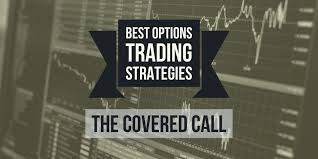Determining the Potential Return for Your Covered Call Trades Options Strategies

When setting up a covered call trade, it is important to estimate ahead of time what that trade is likely to return. Not only will this allow you to evaluate the expected return on your current trade, but it will also give you a benchmark for comparing this trade with other opportunities that may be on your radar.
I have set up a simple spreadsheet that allows me to input the necessary data to determine what a covered call setup will return if the position is called away at expiration. The sheet also tells me the amount of risk that the covered call protects me against should the stock trade lower.
Below is a screen shot of the spreadsheet, which can be easily replicated in Microsoft Excel. The blue cells represent numbers that are entered manually, and the white cells represent data calculated by the formulas.
Since we are buying the stock for $ 29.03 and selling the option contract for $ 2.09, our net cost is $ 26.94. This is also our breakeven price point for the trade. So if the stock trades down to $ 26.94 when the calls expire, we will wind up with a net wash on our trade while still holding our stock position.
The next cell (Net Profit) tells us how much money per share we can expect to make if the stock is called away from us when the calls expire. In the example above, we have a net cost of $ 26.94 and we will be obligated to sell our stock at $ 28 if the calls are exercised. This represents a net profit of $ 1.06 per share.
Net profit in nominal terms isn’t very helpful without understanding the actual percentage return. This is what the next cell is for. In this instance, our net profit of $ 1.06 represents a 3.93% profit over our cost basis of $ 26.94. Now we have some helpful information to know what level of return we can expect for the amount of capital we are investing in the trade.
The final piece of data that we need to input into the sheet is the number of days until the contract expires. This allows us to come up with a per-year rate of return estimate. There is a big difference between creating a 3.93% return over a few weeks versus the same return over a year’s time.
I have set up the formula so that I can put in the number of days until the calls expire. Then the formula takes the nominal percentage return and divides it by the number of days until expiration, and then it multiplies that return by 365 days in a year.
This formula gives us a rough per-year estimate return. It obviously doesn’t account for the ability to compound interest throughout the year, but it also doesn’t account for commissions and fees. This isn’t rocket science, but it does give us a decent estimate for an annualized return.
The final piece of the puzzle gives us the amount of protection (or risk avoidance) we receive from selling the calls. In this example, the stock can drop 7.2% before it hits our breakeven level. This can be a very helpful statistic because we can then look on the chart for the individual stock and see if the protection area coincides with a key support area.
Of course, there are many more detailed statistics that you can run on covered call setups (including volatility measures, time decay expectations, etc.), but this simple table can give you a very quick picture of what to expect for a simple covered call setup.
